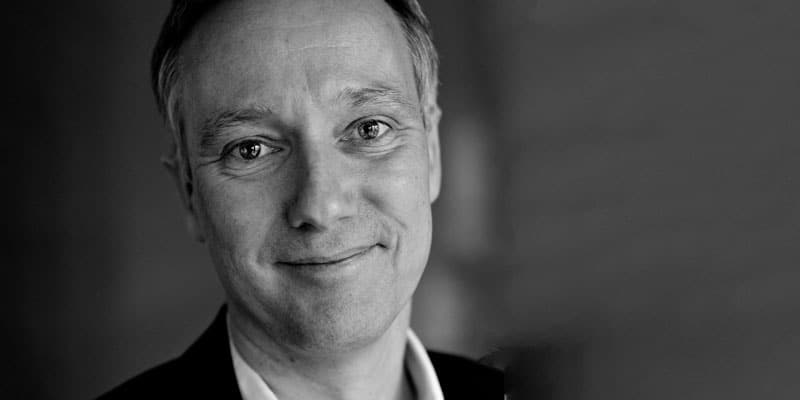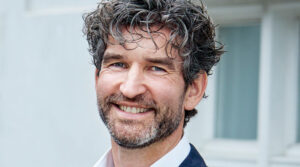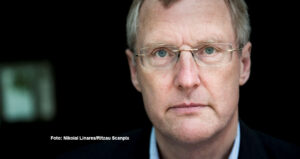The company Deep Branch, with Carnegie’s top analyst Lars Topholm as chairman of the board and the Novo Foundation and a group of Danish venture investors in the ownership circle, has the potential to become a global industrial giant, that can help eliminate a large part of CO2 emissions in industry. The company may also be listed on the stock exchange. Read this interview with Lars Topholm on the prospects for the British company with strong Danish interests.
Global warming in the wake of CO2 emissions is an agenda that is taking up more and more space among politicians, authorities, organizations, investors and the business community. The public debate about politicians’ power of action, or lack thereof, to push CO2 emissions downwards has been and remains heated.
But there are many indications that innovative solutions are now on the way, which could become a game changer in the perception of how to reduce carbon dioxide emissions.
At any rate, equity analyst Lars Topholm, who is chairman of the board of the English company Deep Branch, sees almost unimaginable perspectives in the company’s innovative solution, which so to speak converts CO2, together with hydrogen, via a fermentation process, into proteins that can be used as raw material in fish feed and other animal feeds, and perhaps later even in foods for human consumption.
A Factory has been built
At first it sounds like a cock-and-bull story. But it isn’t.
In fact, Deep Branch has just stated that the Novo Foundation has joined as a co-investor in the company, together with international DSM, the energy company Total and the finance house Barclays, and between them they have invested a total of DKK 60 million to build a mini-factory to test the large-scale production process. The amount isn’t that large at first. Nevertheless, there has been a deep and lengthy due diligence process with external consulting experts, who have had to investigate both the durability of the technology and the commercial possibilities.
ØU (Financial Weekly): Can you tell us how far you are with the project and when you expect to convert CO2 into protein on a large scale, for example by putting a pipe on the chimneys of cements factories?
LT: “After having received the latest round of money, we have started building a production plant on a larger scale, and it will be completed during the autumn. At the beginning of 2022, we will know if production works on a large scale. And I’m pretty sure it does. A critical factor is the fermentation process itself in a large plant. We know that production works in test plants, but large-scale production is a more complicated matter.”
Are there limits to the geographical spread of your market opportunities?
“We can produce the proteins in any country that has CO2 emissions, as well as access to hydrogen production. And it also brings some perspectives in the way that each country can have a protein production that reduces dependence on other countries. It will also be possible to save environmentally damaging transport of soy beans for animal feed by ships from South America. So we take something that is a cost to the industry and transform it into a source of revenue. The CO2 emission is thus changed to a raw material, which is used for the production of saleable protein that can be used for animal feed. Regarding the use of our proteins, we know that it is more nutritious for fish, for example, than proteins in fish feed based on soy beans. ”
New investors
Now you have received money from some large international investors. Should they contribute something beyond capital?
“We have brought in four investors, each of whom contributes their building block to the further development of the company. In addition to money, the Novo Foundation contributes knowledge about fermentation. We know that the production process works in test plants. Now we need the process to work in a large industrial plant. Through co-ownership of Chr. Hansen and Novozymes, Novo can contribute with deep technical insight into and knowledge of how to make the fermentation process on a large scale work. This is a key challenge in further development. DSM is one of the world’s largest producers of animal feed with a large distribution network. Total Petroleum is a progressive energy company that is in the process of a transition from black energy to green energy, with great insight into the hydrogen economy. And Barclays can contribute some financing packages, as an industrial plant costs about $ 100 million. ”
How far are you in the commercial considerations and possible negotiations with partners? It seems that you see a high probability that the actual production of your protein will become a success?
“We are already in full swing, on several levels. Firstly, we negotiate with several industrial buyers, where we are experiencing great interest. Here too, DSM is good to have on board as they already supply fish feed globally. Secondly, we are talking to partners who can supply CO2 and hydrogen, including industries with high CO2 emissions. For example, the cement industry, which is behind 6-8 percent of global CO2 emissions. Thirdly, we are talking to partners who might be interested in building and owning production facilities. ”
Does that mean it’s part of your thinking to sell your production know-how as a license, instead of building factories yourself? It might also be a very big task if there is a real need for many large factories to treat CO2?
“From a purely procedural point of view, there are no restrictions. Ultimately, it’s about building enough facilities. So in theory, we would be able to handle most of the industrial carbon dioxide emissions. In fact, the question is probably more whether it is possible to sell all the protein that will be produced. We are investigating the possibilities of whether it can also be used in ordinary food production for humans and for the cosmetics industry. ”
Additional price for sustainability
What do you see as opportunities for end customers wanting to use your protein because it is extra sustainable, and is the business case dependent on you being able to sell your products with a sustainability label?
“Basically, our business case is based on the fact that we must be profitable without the extra effect of a sustainability label. We are competitive on normal commercial terms. But it is also clear that when we can supply an ingredient that raises a product’s sustainability profile, then the company can also ask more for its goods. Those who have such a label can simply get a higher selling price. ”
Do you have any idea of the profitability of building expensive factories, and will it pay for a cement factory to invest in such a plant?
“Of course, there are some unknowns, including the price of CO2 quotas and hydrogen prices. But in most scenarios, it is a very profitable business. So we think we have a really good business case where our prices are competitive with the prices of soy protein which is also expected to rise due to a growing global population. The protein market for animal feed alone amounts to 200 billion Euro a year, and we can see more options for using the protein. If we succeed in scaling this, it could potentially become a very, very large company. It has the potential to generate billions in revenue. I have not put the numbers into a DCF model because it can quickly become very large numbers, and it is also too early. ”
The stock exchange ambitions
What kind of company do you expect to see in three to five years’ time if your large-scale production proves to work as intended?
“We see ourselves as a company with a platform technology: We can produce more than one type of protein, and we can supply protein to different product markets. If you have to think big, and we do, you have to see us as a new Chr. Hansen or Novozymes, both of which have two layers in their technology, namely microbiology and fermentation. And that’s exactly what our technology is based on. Our fermentation is different: we feed carbon dioxide and hydrogen into a bacterium, which together results in a protein. The other two companies base their processes on sugar. In three or four years, I could well imagine that we have been listed on the stock exchange, but so far we are 100 percent dedicated to delivering our milestones. We know that there are big players who have shown interest in investing in us. But it could also be interesting to be independently listed, just like Novozymes and Chr Hansen, ” Lars Topholm concludes.
MWL
For more articles in English: Our articles in English








